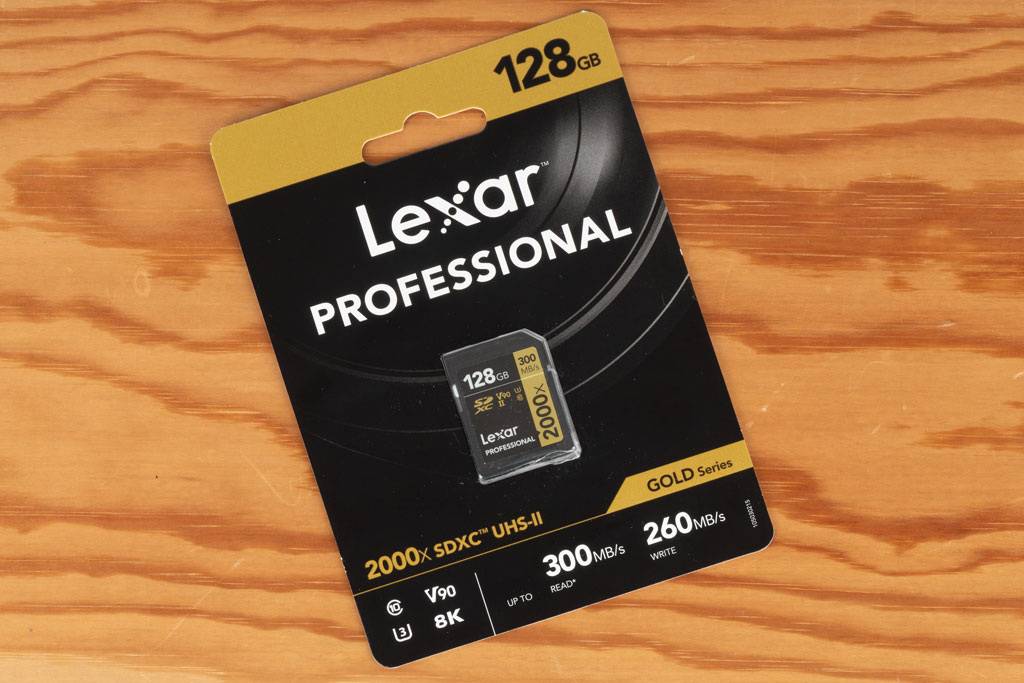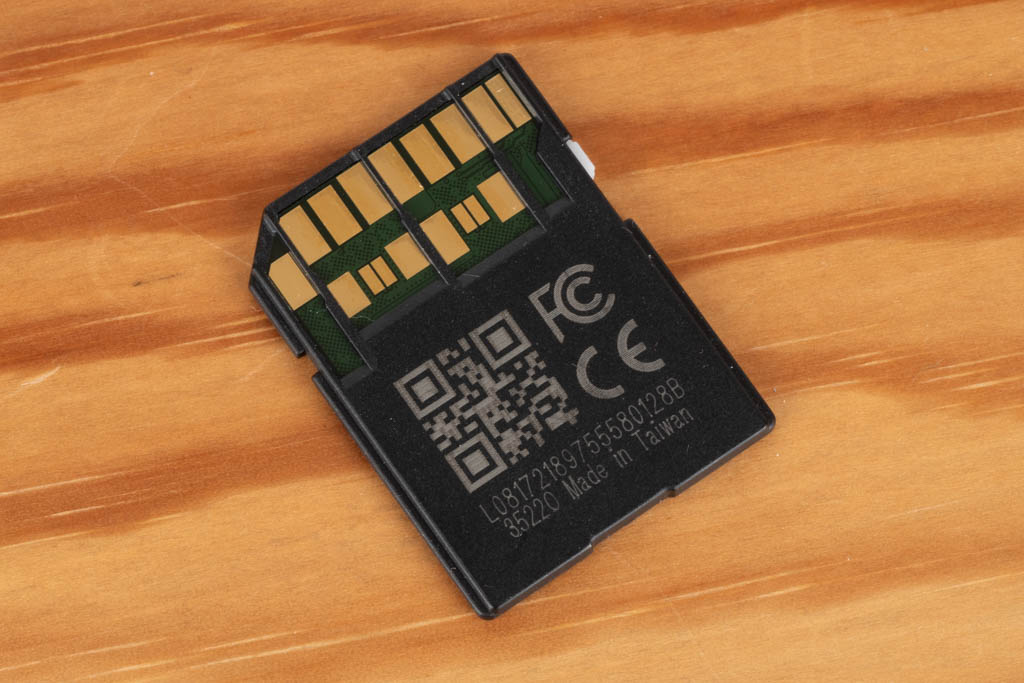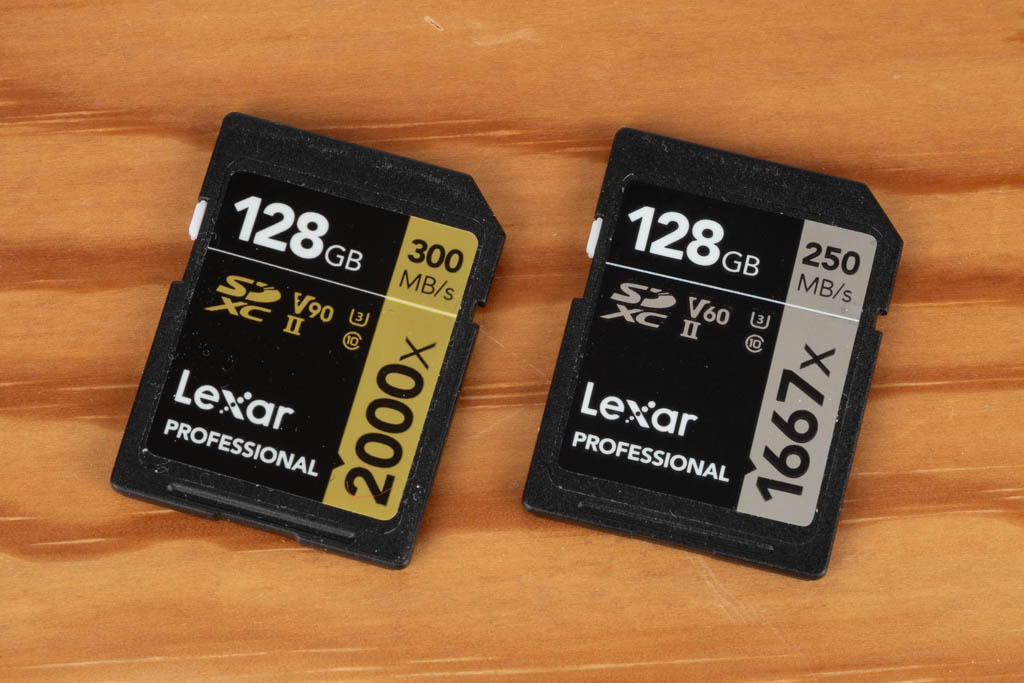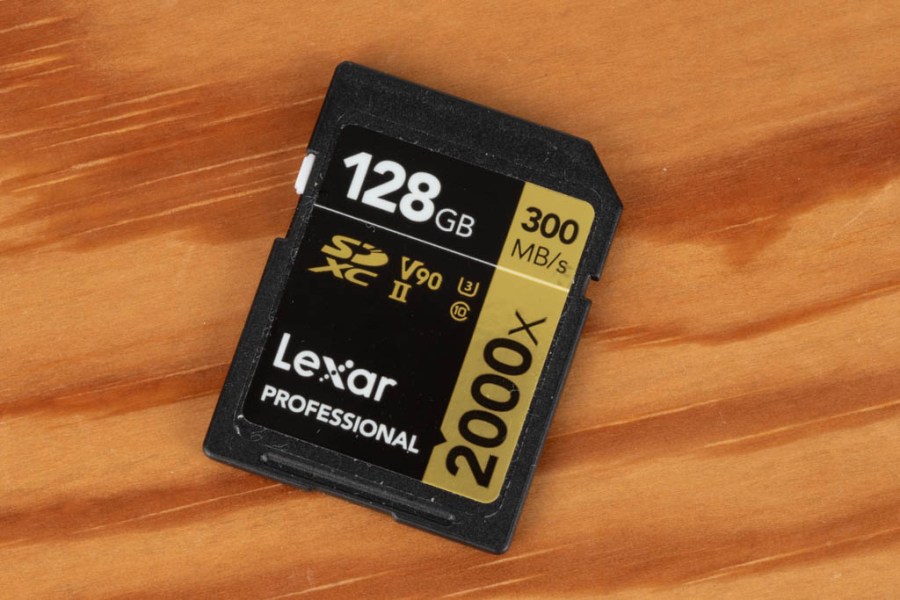When it comes to selecting SD cards, it’s notoriously difficult to navigate the confusing array of options and speed ratings available. Lexar aims to simplify things by colour-coding its cards. The Gold Series is its fastest, with the Lexar Professional 128GB 2000x SDXC UHS-II card providing the second-highest storage capacity in the line-up.
Lexar Professional 2000x SDXC UHS-II at a glance:
- UHS-II SD memory card
- 32GB, 64GB, 128GB and 256GB sizes
- $49.99, $79.99, $169.99, and $269.99 respectively
- £64, £99, £199, and £399
- 300MB/sec read speed, 260MB/sec write
- lexar.com
At $170 / £199 for 128GB, this card may look expensive, although it’s competitive with other premium offerings from the likes of Delkin, Sony, and SanDisk. But with much cheaper UHS-II options also available, including Lexar’s own Silver Series cards, you could be forgiven for wondering why you’d splash out on the 2000x option.

Lexar Professional 128GB 2000x SDXC UHS-II SD retail package. Credit: Andy Westlake
The answer, naturally, lies with speed. While that 2000x label indicates a read speed of 300MB/s, write speeds are often much more important from a photographer’s point of view. Here, the card’s 260MB/s rating trounces its 1667x Silver series sibling, which only promises 120MB/s. As a result, the Gold card should have a much larger practical speed advantage than its label suggests. This ought to equate to extended burst shooting and glitch-free high-quality video recording.
Lexar Professional 2000x SDXC UHS-II key features:
- UHS-II: This card is of the UHS-II type, with two rows of contacts. You won’t get the full benefit of it in cameras that only support UHS-I
- High speed: With 300MB/sec read and 260MB/sec write speeds, Lexar says the card is designed to handle high-speed bursts and 8K video
- Durable: The card is claimed to be shockproof, vibration proof, protected against X-rays, and work in temperatures from 0°C to 70°C
- Warranty: Lexar promises it will repair, replace, or refund the product free of charge if quality problems arise during its use
To see how the card performed, I first tested its speed using CrystalDiskMark with my 2019 Dell XPS 15 Windows 11 laptop. This recorded a read speed of 250MB/sec and a write speed of 230MB/s. The latter comprehensively outpaced the 1667x card’s measured speed, of 120MB/s. It was also a match for the fastest cards I had to hand, including a Sandisk Extreme Pro 300MB/sec UHS-II SDXC, and a Sony G-series card (rated for 300MB/s read and 299MB/s write), both of which registered similar read and write speeds to the Lexar Gold card.

The two rows of contacts indicate that this is a UHS-II type card. Credit: Andy Westlake
The real test, though, comes in-camera. Shooting high-speed bursts with an array of cameras of different brands – namely the Fujifilm X-T5, Olympus OM-D E-M1 Mark III, and Sony Alpha 7R IV – I found that compared to cheaper options, the Lexar 2000x card enabled longer bursts before the camera slowed down and/or shorter clearance times when the buffer was full. For video, the Lexar 2000x passed the toughest test I could give it, supporting C4K 50p 4:2:2 10-bit All-I recording at 600Mbps in the Panasonic Lumix S5IIX continuously until it was full.
Crucially, the card also performed flawlessly in real-world operation. I used it at airshows in both the Nikon Z 8 and Sony Alpha A6700, where I shot a lot of extended bursts without ever being held up by write times.
Lexar 1667x SDXC UHS-II Silver Series
If you don’t record much video or shoot fast bursts, a slower card should work fine. However, the fast read speeds of UHS-II cards can still be welcome when copying files to your computer, as long as you have a compatible card reader.

Lexar’s silver series cards offer slightly slower read speeds, but much slower write speeds, at a considerably lower price. Credit: Andy Westlake
Here, Lexar’s silver series 1667x cards provide a good compromise, costing $30/£39 for 64GB, $36/£66 for 128GB, and $90/£117 for 256GB.
Lexar Professional 2000x 128GB SDXC UHS-II: Our Verdict
If you want to get the best performance from your camera, a large and fast card is essential. The Lexar Professional 128GB 2000x SDXC UHS-II is a good choice, giving impressive speed and reliability across a wide range of cameras. Other brands’ top cards can provide similar performance, but nothing I tested could beat it.

Follow AP on Facebook, Twitter, Instagram, and YouTube.






